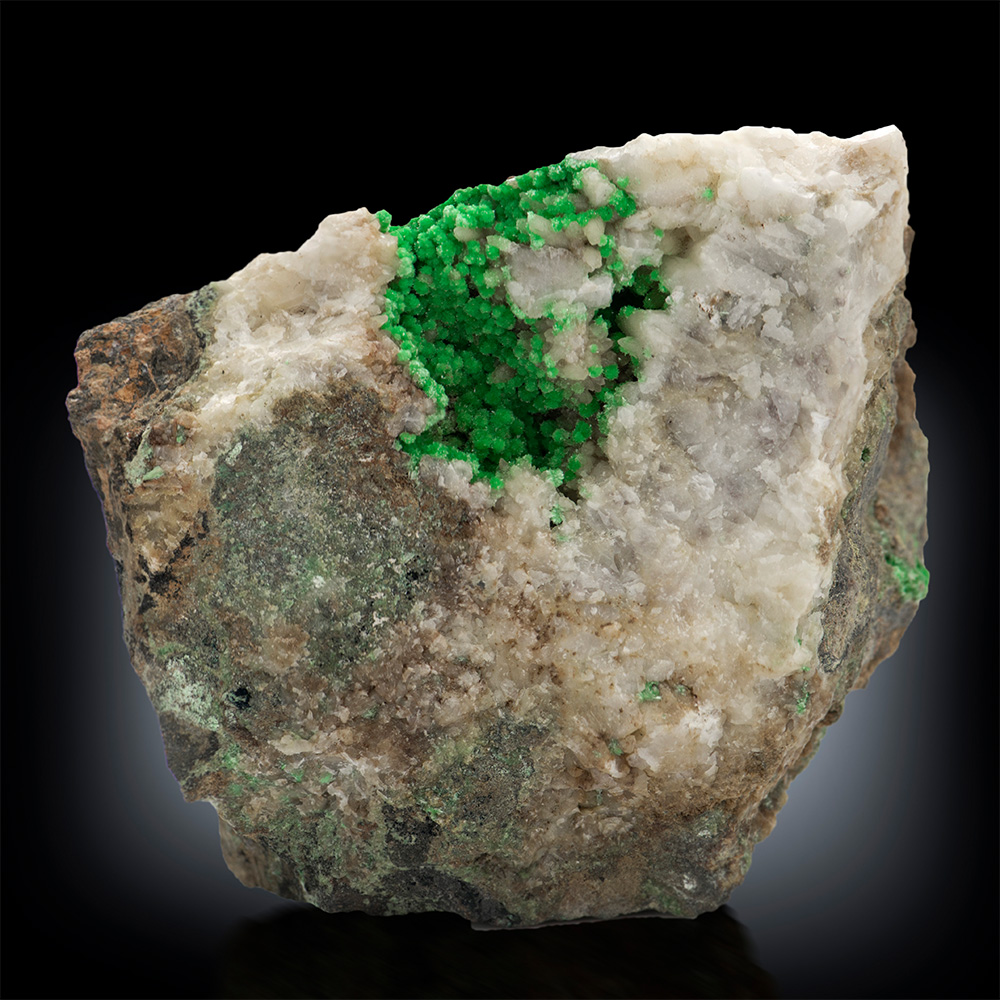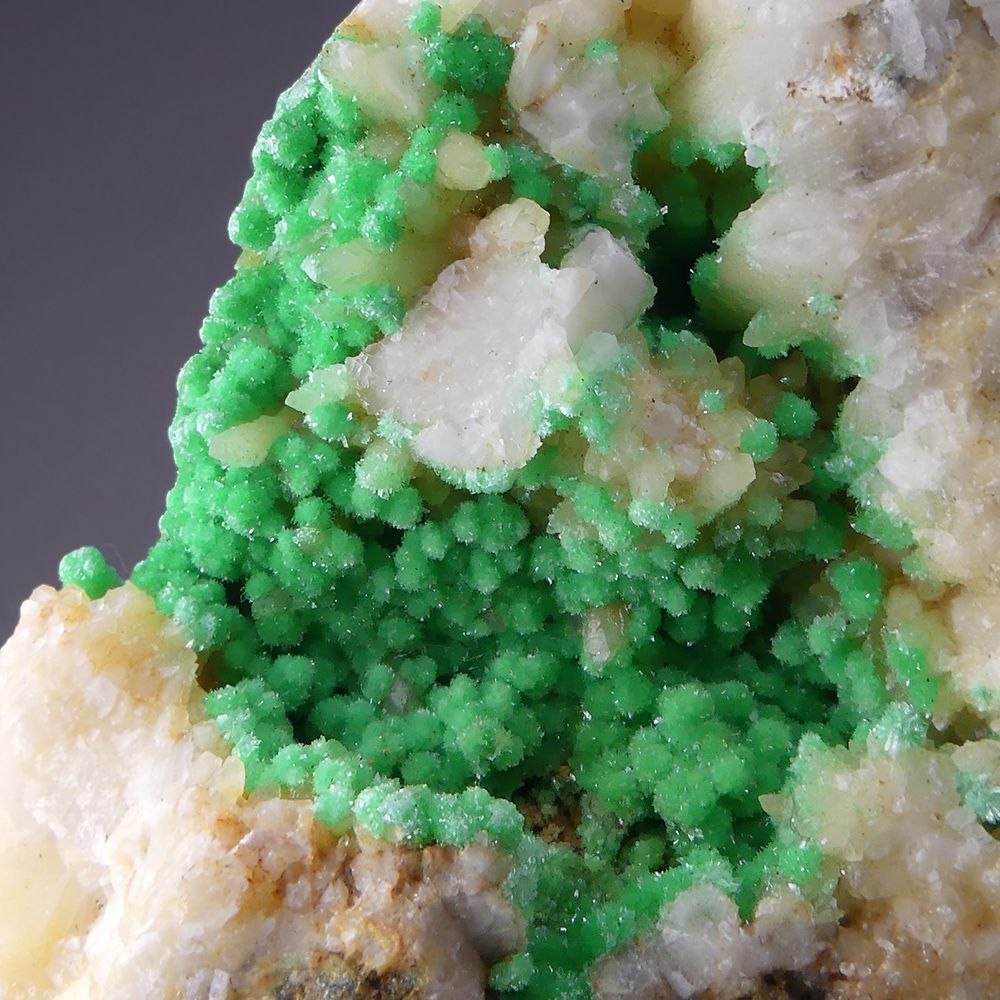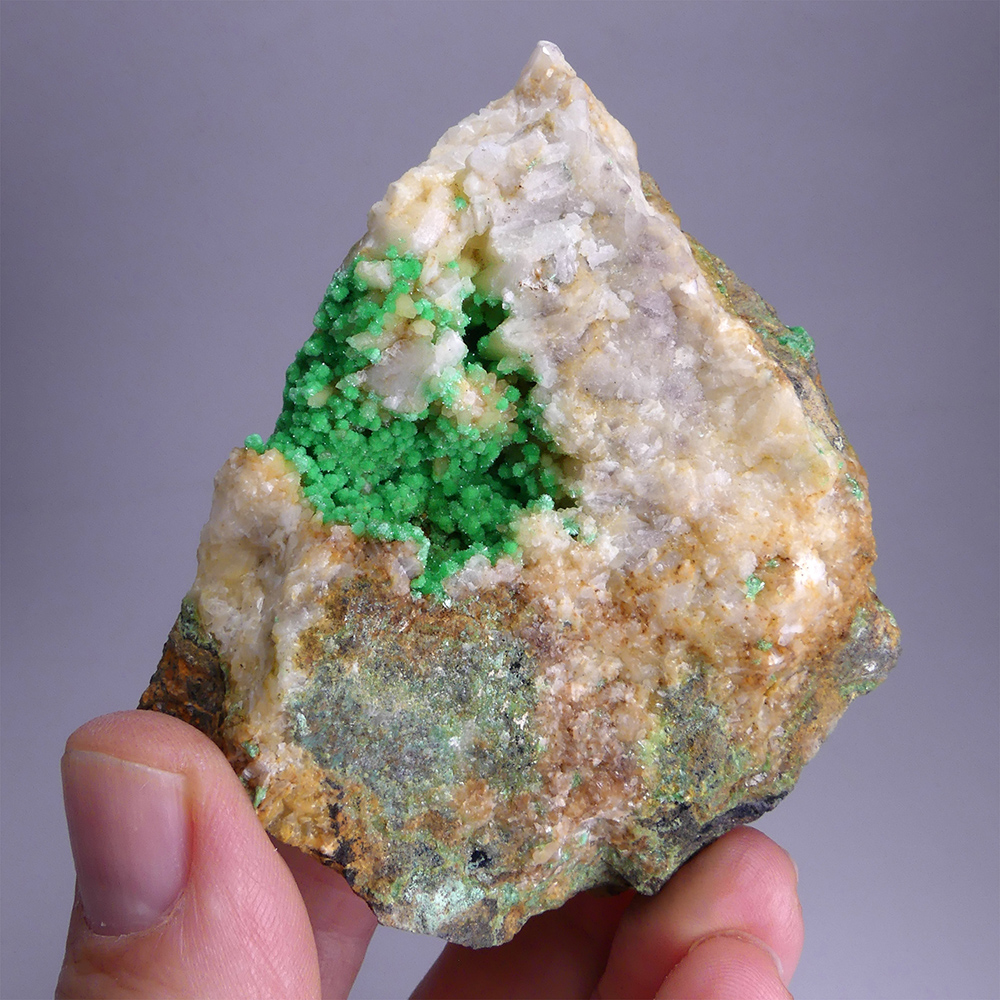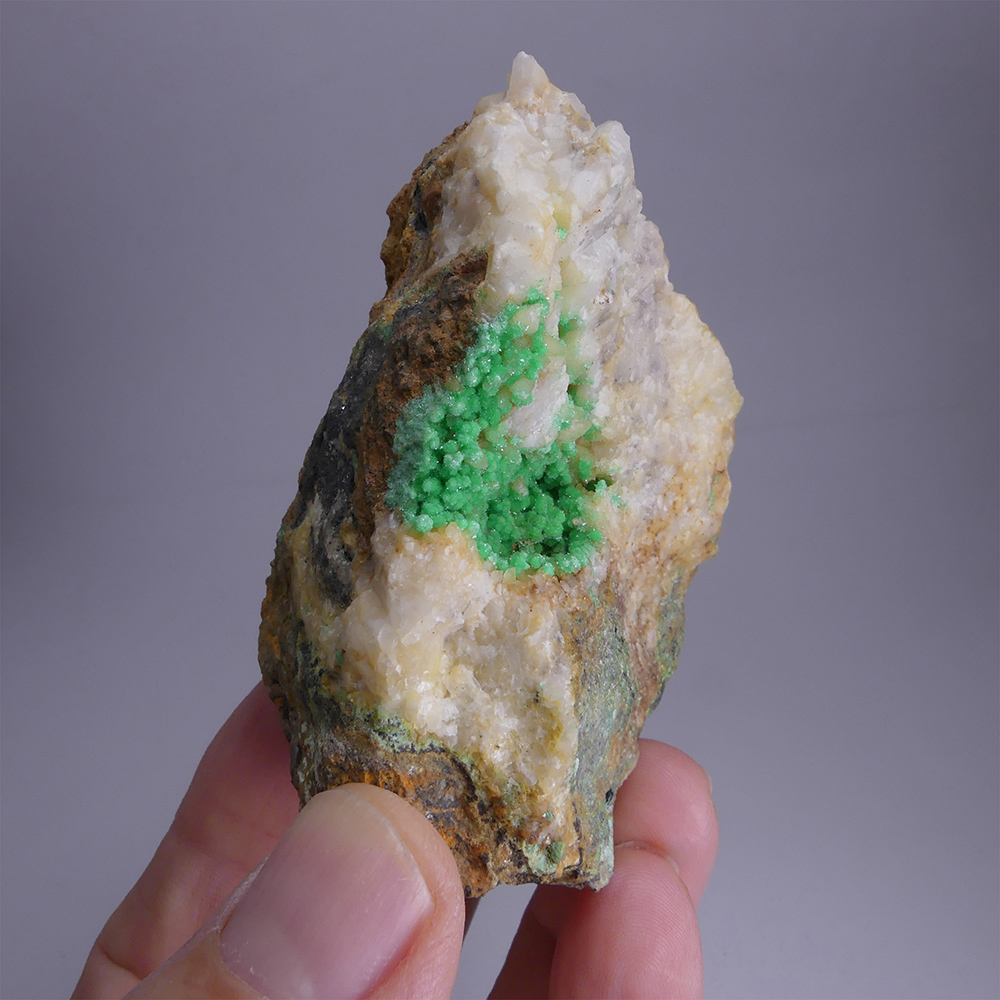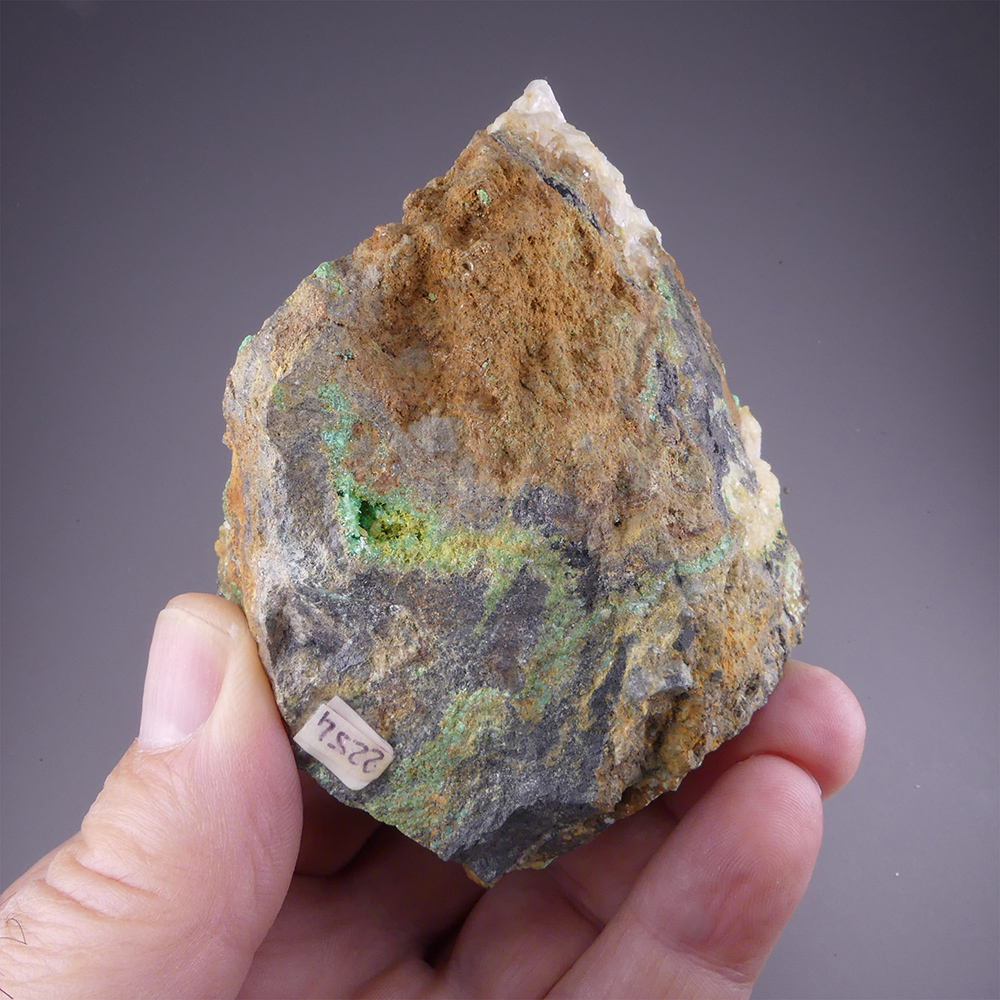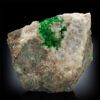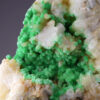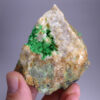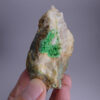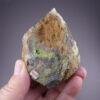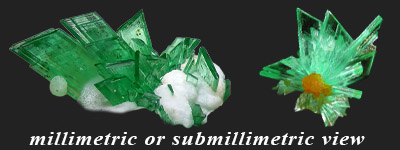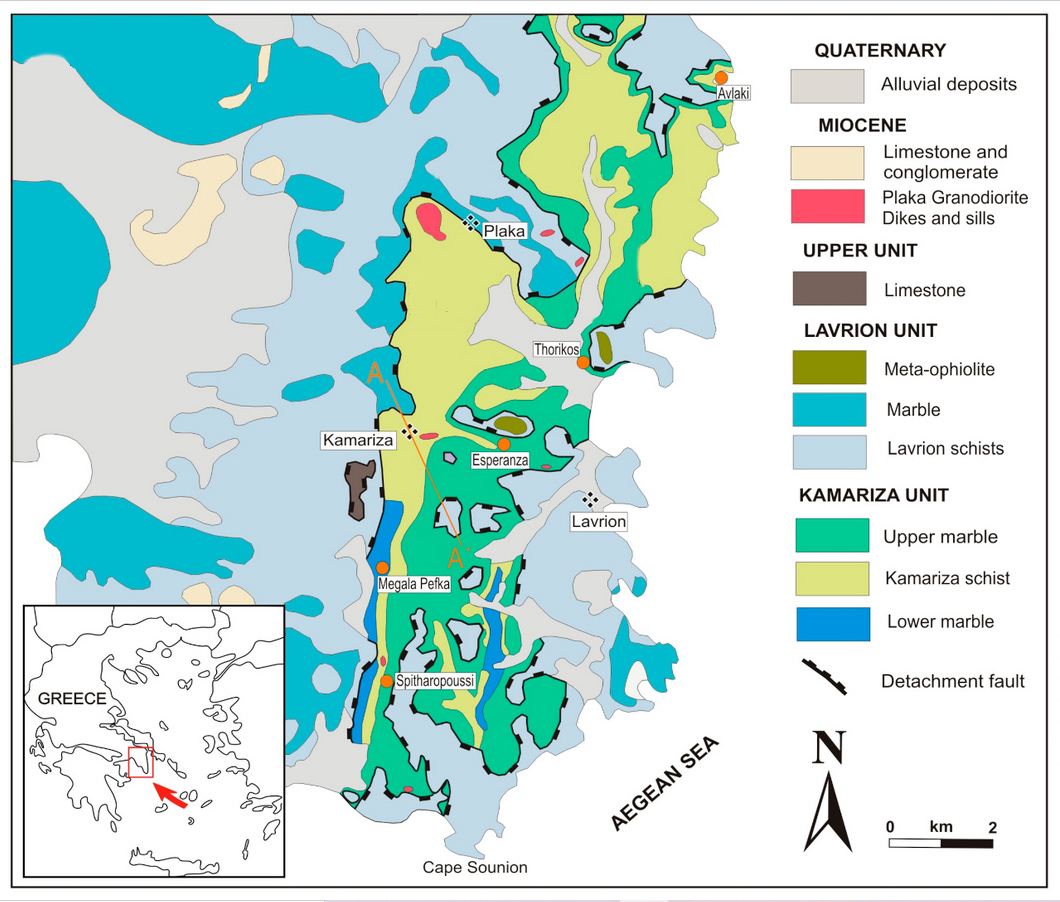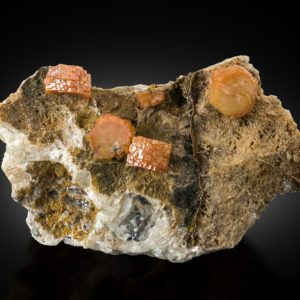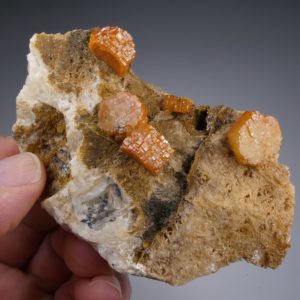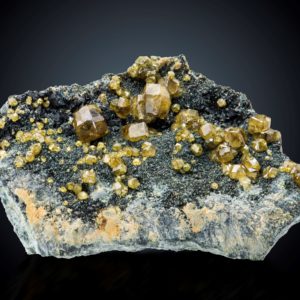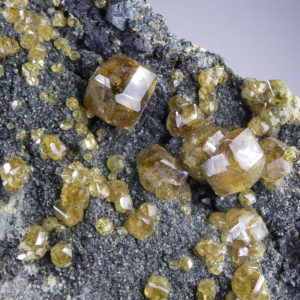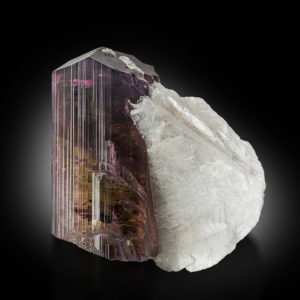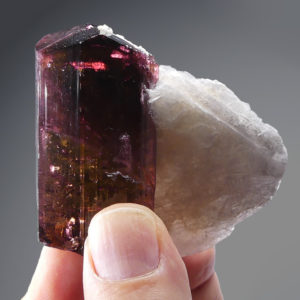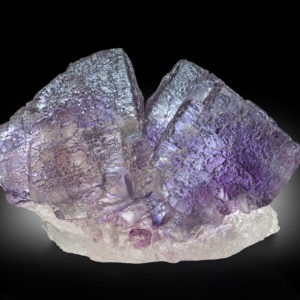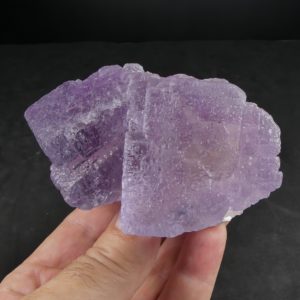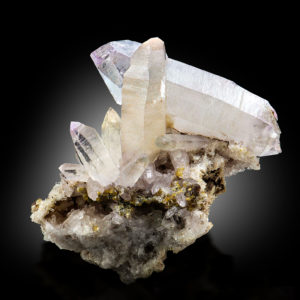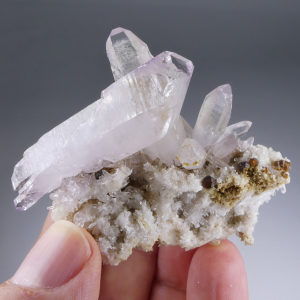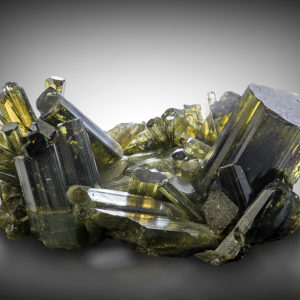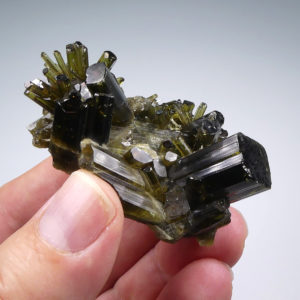ANNABERGITE – Greece – GFS0417
In stock
€ 900,00 +TAX
Annabergite
Lavrion Mining District, Lavreotiki, East Attica, Attica, Greece
9,2×7,5×5 cm.
Annabergite specimens from Lavrion are highly prized by collectors due to their vibrant color and well-formed crystals. This specimen is composed of an open calcite cavity almost entirely filled with small, brilliant annabergite spherules exhibiting a characteristic intense green color. This piece is highly representative for its size, color, and overall arrangement, making it not easy to find on the market.
Annabergite is a hydrated nickel arsenate mineral that typically forms as a bright green crust or small crystal aggregates. It is often found as a secondary mineral in the oxidation zones of nickel-bearing hydrothermal deposits. Lavrion, located in Greece, is a renowned locality for Annabergite specimens, among other minerals. It occurs in the oxidation zones of polymetallic sulfide veins that were historically mined for lead, silver, and other metals.
The Lavrion area contains 638 primary and supergene minerals (more than 12% of all known minerals worldwide), but from a mineralogical stand point, secondary minerals from the Lavrion district are famous, not only with respect to their color and crystal size, but because the district is the type-locality for 23 species. For more info ![]()
The polymetallic sulfide mineralization of Lavrion (mainly pyrite, chalcopyrite, galena, and sphalerite, which accompany quartz, fluorite, and calcite as gangue minerals) was subjected to supergene oxidation that formed a gossan. This process involved downward-penetrating water, oxidation of hypogene sulfides, partial mobilization of elements, and their re-precipitation in open spaces developed by interaction of acidic water with marble. Surface exposure of the Lavrion stratigraphy is believed to have occurred about 5 Ma ago, following tectonic uplift in association with variations in paleoclimate in the last 5 Ma. This resulted in supergene oxidation of near-surface mineralization. Furthermore, in the last million years, oxidation processes have been amplified by several fluctuations of up to 120 m in sea level, which lowered the water table and deepened oxidation to far below current levels.
The Lavrion district in Greece is part of the Attic-Cycladic metamorphic core complex, and contains a variety of ore types including porphyry Mo-W, skarn Fe-Cu-Bi-Te, carbonate-replacement Pb-Zn-Cu-Ag ± Au-Bi and vein-type Pb-As-Sb-Ag and Pb-Ni-Bi-Au. Between the Eocene and Miocene, metamorphic rocks in Lavrion, primarily marbles and schists, experienced multiple stages of metamorphism and deformation due to the Cycladic belt’s collision and collapse. Mineralization was synchronous with the intrusion of a late Miocene granodiorite body in the footwall marbles and schists of the Western Cycladic Detachment System.
In summary, local geology, tectonic and magmatic activity, subsequent surface oxidation and hydrothermal activity were fundamental factors in determining how and when the mineralization was formed. For more info ![]() and
and ![]()
In stock
Additional information
| Weight | 0.328 kg |
|---|---|
| Dimensions | 9.2 × 7.5 × 5 cm |
| Country | |
| Location | |
| Species |

